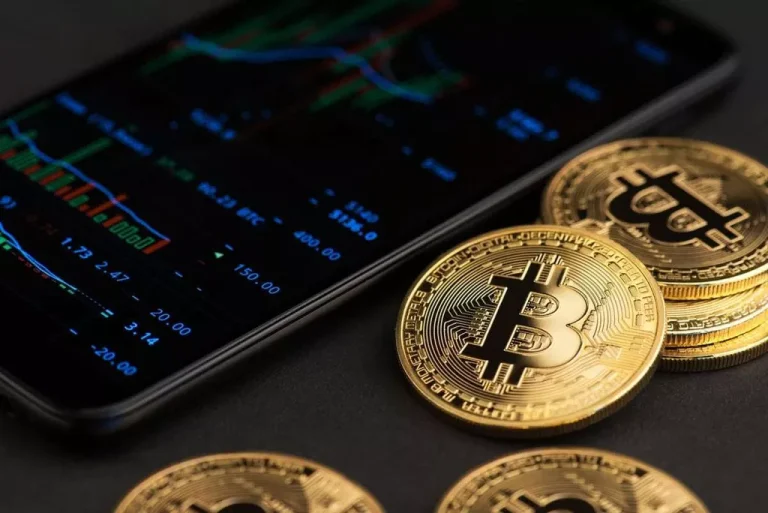FinTech
The Highest 12 Crypto Liquidity Swimming Pools In 2023
This most frequently comes in the type of liquidity providers receiving crypto rewards and a portion of the buying and selling fees that their liquidity helps facilitate. DeversiFi protocol allows private and public cryptocurrency wallets to deposit property within the native’s good contract referred to as DeversiFi zkSTARK. Through the smart contract, merchants execute off-chain trades and on-chain steadiness.

As Uniswap does not have an order e-book like a centralized change, orders are fulfilled from the assorted liquidity pools created on the platform. Kyber is an Ethereum primarily based, on-chain liquidity protocol that permits DApps to supply liquidity to enhance user experience. Consequently, distributors and wallets allow users defi pool to pay, swap, receive sorts of the token in a single transaction. It operates an open-source exchange where you’ll find a way to create a new exchange pair in a new liquidity pool for any token and at no listing value. However, the platform expenses swappers a 0.3% swapping fee which is shared with the liquidity providers.
Lending platforms are a simple decentralized lending and borrowing market. In the case of Single asset liquidity pools, a pool consists of one asset only. A liquidity provider is an individual who deposits his belongings to a specific liquidity pool to provide liquidity to the platform. For example https://www.xcritical.com/, an individual can turn into a liquidity supplier on Uniswap (a Decentralized Exchange (DEX)) and deposit his property into Uniswap’s liquidity Pool. Consequently, there’s no special privilege since anybody can add liquidity while the pools’ ownership is tracked with Balancer Pool Token.
In different words, close to one-quarter of the world’s inhabitants doesn’t have an account with a monetary establishment.
Bancor
As market demand and supply fluctuates, prices modify in lockstep. Further, merchants use Uniswap to purchase or sell crypto tokens, and in trade for that, Uniswap charges a buying and selling payment. Uniswap distributes this trading charge to its Liquidity Providers as a reward for providing liquidity to the platform. It is a non-custodial portfolio supervisor, liquidity supplier, and price sensor, built on Ethereum. It permits anyone to create or add liquidity to customizable swimming pools and earn trading fees.
It is a model new protocol that has few purposes so far, however certainly one of them is liquidity insurance coverage. This characteristic provides security and confidence to liquidity suppliers and new traders. To overcome the inefficiency of the order e-book, offering liquidity became necessary. Liquidity is important for facilitating funding and supporting promising projects. Nansen, a blockchain analytics platform, discovered that 42% of yield farmers who provide liquidity to a pool on the launch day exit the pool inside 24 hours.
In solving the bureaucratic nature of the order book, seeking a method to supply liquidity becomes essential as a result of it hinders investment whereas deterring promising projects. Meanwhile, the order guide model is not restricted to centralized crypto exchanges as decentralized crypto exchanges have the identical fate at their early stage. Consequently, liquidity swimming pools – through automated good contracts are filling the gap. An operational crypto liquidity pool should be designed in a way that incentivizes crypto liquidity suppliers to stake their assets in a pool. That’s why most liquidity providers earn trading charges and crypto rewards from the exchanges upon which they pool tokens.

In a trade, traders or investors can encounter a distinction between the anticipated worth and the executed price. The liquidity pool aims to remove the problems of illiquid markets by giving incentives to its customers and offering liquidity for a share of buying and selling charges. For developers, liquidity swimming pools present a approach to create decentralized liquidity, enabling any dApp that requires it. When DEXs had been first invented, they encountered liquidity problems as they tried to imitate traditional market makers. A major element of a liquidity pool are automated market makers (AMMs).
Trading fee rewards are often deposited into the pool automatically. The exchange usually issues a by-product token as a receipt of funds deposited by you. On Uniswap, these tokens are known as LP Tokens (Liquidity Provider Tokens). These LP tokens can either be burnt to withdraw liquidity from the platform or traded as is in the open market. The protocol launched in March 2020 recently distributed a governance token referred to as BAL to liquidity providers through a course of known as liquidity mining.
What Are The Elements Of A Liquidity Pool?
Your profit comes from the buying and selling fees which are collected from every swap within the pool. Different pools have totally different fee buildings, starting from 0.05% to 1%, relying on the token pair and the platform. Liquidity pools work by offering an incentive for customers to stake their crypto into the pool.

It operates a cross-blockchain DeFi protocol that connects regional cloud-based exchanges. According to the project, they imagine that connecting exchanges will clear up latency, safety, and custodial challenges whereas providing massive liquidity for stakeholders. It establishes a generalized framework for fungible ERC-20 tokenized options contracts referred to as otokens. Users can write collateralized options contracts, and sell those contracts within the type of tokens.
The Significance Of Liquidity Swimming Pools
Arbitrum is a layer 2 scaling resolution for Ethereum that helps good contracts with better scalability and privateness. Users profit from low transaction fees and less congestion on Arbitrum. Arbitrum lets builders create good contracts by coding a digital machine (VM) that runs the contract logic. Arbitrum additionally allows important improvements in scalability and privacy. Bancor Relay is a liquidity pool that makes use of Bancor stablecoin (USDB) to scale back volatility and permits tokens to be independent of BNT. Bancor additionally uses BNT to attach totally different blockchains like ETH and EOS.

The order book model was not only a problem for centralized crypto exchanges but in addition for decentralized crypto exchanges in their early days. Therefore, liquidity swimming pools emerged as a method to supply liquidity via automated sensible contracts. Liquidity is the flexibility to purchase or sell an asset rapidly and easily without affecting its price. Liquidity is important for any market, particularly for crypto trading. Without liquidity, merchants might face delays, slippage, or excessive charges. Liquidity swimming pools are some of the well-liked topics for crypto fanatics.
Top Eight Defi Apps To Earn Extra Money In 2024
On the other hand, the good pool is another variation of personal swimming pools the place good contracts control transactions. However, it accepts liquidity anywhere and is tracked with the Balancer Pool Token. The BTC-USDT pair that was originally deposited would be incomes a portion of the fees collected from exchanges on that liquidity pool. In addition, you’ll be incomes SUSHI tokens in exchange for staking your LPTs. There are multiple ways for a liquidity provider to earn rewards for offering liquidity with LP tokens, together with yield farming. In different words, users of an AMM platform supply liquidity swimming pools with tokens, and the worth of the tokens within the pool is determined by a mathematical method of the AMM itself.
Protocols incentivize liquidity providers through token rewards. Uniswap’s internal algorithm known as Automated Market Makers decides the ratio at which both tokens would be deposited into the pool. It introduces Bancor stablecoin to unravel liquidity volatility as a result of dependence on BNT, the native token. Consequently, it helps liquidity pooling between BNT token, Ethereum or EOS tokens, and its steady coin (USDB). Before now, the standard markets, including Cryptocurrency, inventory, and foreign exchange suffered insufficient liquidity.
The Balancer pooling protocol is composable and operates a number of pooling types, including private, shared, and smart swimming pools. The private pooling allows solely the proprietor to produce liquidity, update parameters, and full permission. Unlike private swimming pools, all parameters like weights, tokens, fees, and so on. are completely set in a shared pool. SushiSwap (SUSHI) and Uniswap are widespread DeFi exchanges that use liquidity swimming pools on the Ethereum community containing ERC-20 tokens.
For every commerce, a buyer should anticipate a vendor to set costs. Bancor’s latest model, Bancor v2.1, offers several key options to liquidity suppliers (LPs), together with single-sided exposure and impermanent loss protection. Kyber’s native coin, KNC, is used for rewards and governance of the Kyber ecosystem. Users can stake their KNC tokens to take part within the ecosystem governance and earn returns primarily based on good contract parameters. The Ledger Live app presents an analogous performance for Ledger users. Until DeFi solves the transactional nature of liquidity, there isn’t a lot change on the horizon for liquidity pools.



